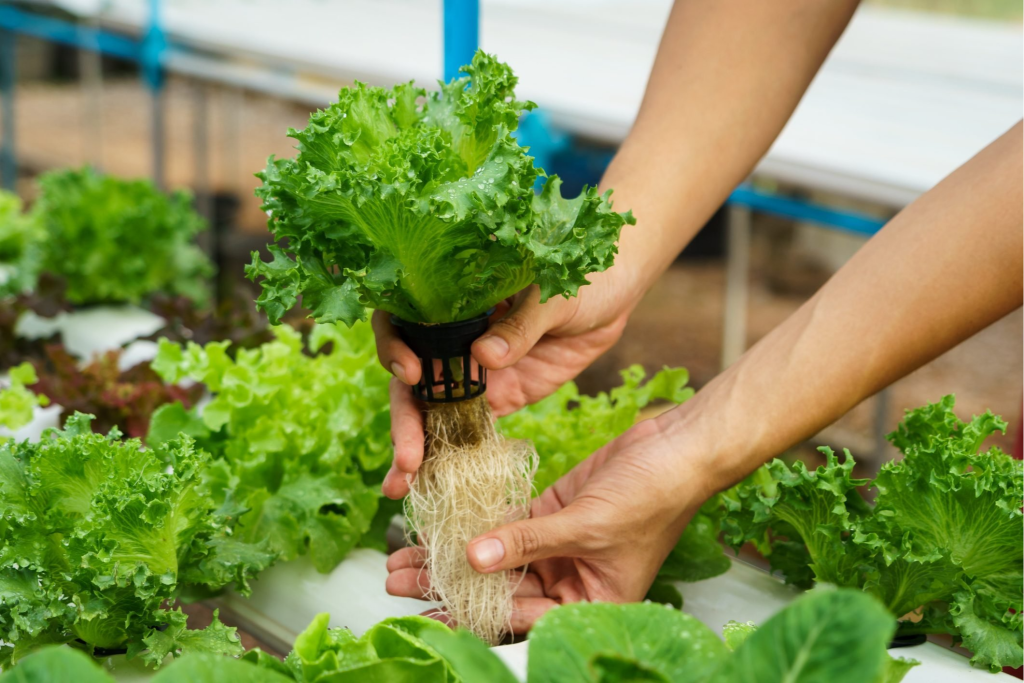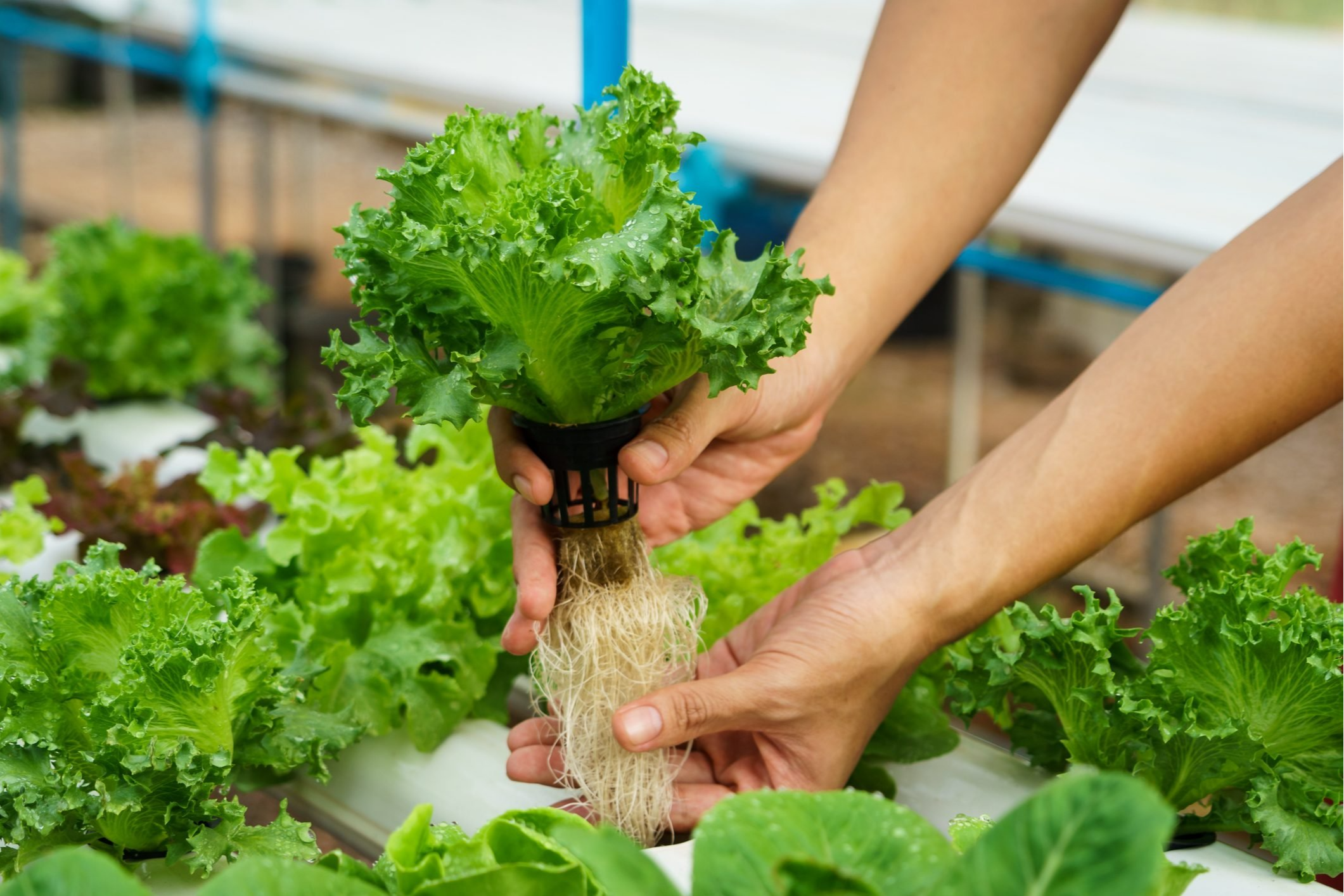Table of Contents

What is Hydroponic Gardening?
In hydroponic gardening, plants are grown in a solution of water instead of in soil. Fruits and vegetables are grown in water using this technique, which allows the roots to breathe freely, preventing rot and enhancing disease resistance.
It can help you save space in the home by removing the need to maintain a traditional garden, which is an excellent method to enhance yields in your garden.
In comparison to conventional crops grown in soil, hydroponic crops are larger and of superior quality thanks to the use of skilled growers.
How Does Hydroponic Gardening Operate?
Plants develop in a nutrient-rich fluid that provides all the nutrients they require to flourish. Solutions are usually composed of water and an inert substance like sand or gravel.
Plants will develop much faster and more effectively than they would in a regular garden since the roots won’t have to work as hard to acquire the nutrients they require.
The plants also become considerably bigger and healthier since they don’t have to struggle through thick dirt layers and weeds to get to the nutrients they require.
Hydroponic Crops and Plant Types
Almost any plant can be grown with hydroponics, but certain hydroponic plants work particularly well:
Fruit: cantaloupe melon, strawberry, raspberry, blueberry, grape and even tree fruits such as lemon or apple using dwarf trees.
Vegetables: carrot, beetroot, cucumber, aubergine, onion, pepper, radish, courgette, tomato.
Greens: green beans, cauliflower, cabbage, celery, broccoli, lettuce, pea, leek, spinach.
Aromatic plants: basil, coriander, mint, thyme, sage, tarragon, rosemary.
The benefits of hydroponic gardening
Hydroponic gardening is the process of growing plants without soil.

The method of growing plants without soil typically used is called hydroponics. It can be done in a variety of ways, but generally speaking, it entails utilizing a solution that contains all the nutrients the plant needs to develop. Typically, this fluid is poured into trays with holes where plants are planted and their roots are allowed to grow. The roots take up the nutrients from the soil naturally.
For those with little area available for food production, this gardening technique is ideal. It is also appropriate for individuals who need fresh, organic fruits and vegetables but lack the funds or room to establish a garden outside their residence (or apartment). This approach requires less area than conventional outdoor planting because there is no hoeing involved.
Growing plants efficiently is possible with hydroponics.
Growing plants efficiently is possible with hydroponics. It has a number of benefits over soil-based gardening and grows plants without using dirt. The key benefit is that it is more sustainable than conventional soil-based gardening because it needs less water and energy.
You can also grow plants with hydroponics in isolated areas where there isn’t enough room or food-growing resources. Additionally, you don’t need any tools or equipment for this procedure because all you need are tubes that transport oxygenated air from an air pump system and containers packed with fertilizer solutions for your crops.
Beneficial to the environment.
Because hydroponic gardening is more effective than soil-based farming, it is preferable. Additionally, it is more comfortable and good for the environment.
Why does this matter? One difference between hydroponic farming and regular farming is the utilization of water. The planet and its priceless natural resources will benefit from this!
There is no need for herbicides or pesticides: they are safe from weeds and insects, making unnecessaries use of these products.
To meet your unique demands, hydroponic systems can be specially created.
You can have this one-of-a-kind solution tailored to your individual requirements. Plants can be grown indoors, outdoors, and in between in any type of environment, space, or container. The seasons and weather outside are therefore not a constraint on you. Additionally, if your living situation prevents you from having the privilege of producing outdoors all year round, hydroponics is the best option for you (e.g., because it gets too hot or cold).

The future of hydroponics
In a relatively short amount of time, hydroponics has been adapted to a wide range of circumstances. In the future, drought-stricken regions may employ desalinated seawater in hydroponic systems to grow food in deserts, coastal regions, and developing nations. On the International Space Station, lettuce is already being produced hydroponically and consumed by astronauts. In order to feed astronauts on longer journeys, research is currently being done to look into various kinds of vegetables that can grow hydroponically in space.
New to hydroponic gardening? Don’t worry, check this post 5 Ways to Start Hydroponic Gardening for more information, or you can view this post 10 Gardening Tips: How To Maintain Healthy Plants and Gift for Gardener
In conclusion, hydroponic gardening can be a highly rewarding experience with the potential to yield great results. It is a versatile, sustainable and cost-effective way to grow plants at home, and with the right information, anyone can unlock the benefits of hydroponic gardening. With the help of this guide, the reader can now confidently begin their journey into the world of hydroponic gardening and reap the maximum yields from their efforts.

One thought on “Unlock the Benefits of Hydroponic Gardening: A Guide to Reaping Maximum Yields”